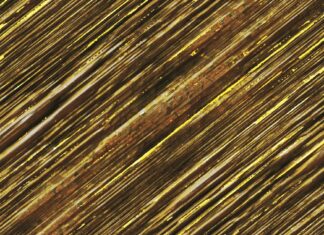The realm of infant care and parenting has witnessed remarkable advancements over the years, leading to the development of products and techniques aimed at ensuring the well-being and comfort of newborns. Among these innovations, a term that frequently emerges is “Anti-Colic.” Anti-Colic solutions have garnered substantial attention for their potential to alleviate one of the most common challenges faced by both infants and parents – colic. Colic, characterized by excessive crying, fussiness, and discomfort in infants, has long perplexed caregivers due to its elusive nature and complex causes. In response, the market has seen the emergence of a plethora of products and strategies claiming to be “Anti-Colic,” each offering a unique approach to address this concern.
Understanding Colic and the Anti-Colic Approach
Colic, often deemed a rite of passage in infancy, refers to the puzzling and distressing phenomenon of excessive crying and irritability in infants, typically occurring during the first few months of life. The underlying causes of colic remain multifaceted and not entirely understood, ranging from gastrointestinal issues and feeding difficulties to sensory overload and maternal factors. The elusive nature of colic has led to the development of a wide array of products and interventions, all vying for the “Anti-Colic” label.
The Landscape of Anti-Colic Products and Innovations
In recent years, the market has witnessed an influx of products claiming to possess “Anti-Colic” properties, designed to alleviate the discomfort experienced by colicky infants. These products span a diverse range, including baby bottles, nipples, formula, pacifiers, and specialized feeding systems. Manufacturers of these products often incorporate innovative designs, such as venting systems, collapsible bags, and unique nipple shapes, all intended to reduce the intake of air during feeding and thus mitigate potential causes of colic.
The concept of an “Anti-Colic” baby bottle, for instance, revolves around advanced venting systems that aim to minimize the ingestion of air while feeding. These systems, often composed of valves or vents, purportedly facilitate a smoother milk flow and regulate air intake, subsequently minimizing the risk of gassiness and discomfort. Moreover, specialized nipples designed with intricate patterns claim to simulate the natural breast-feeding process, potentially reducing the chances of nipple confusion and promoting a more relaxed feeding experience.
Scientific Veracity and Controversies
Amid the proliferation of “Anti-Colic” products, a critical question arises: How scientifically grounded are these claims? While manufacturers present various studies and anecdotal evidence to support their products, the scientific community remains cautious. The nuanced nature of colic, coupled with the lack of a definitive understanding of its origins, complicates the process of validating these products. While some parents report significant improvements in their infants’ colic symptoms after employing these innovations, others find little to no discernible difference.
The Holistic Approach: Beyond Products
Beyond tangible products, the notion of combating colic extends to holistic approaches that encompass a spectrum of measures to address infant well-being. Here, the term “Anti-Colic” takes on a broader meaning, encompassing practices that range from changes in maternal diet (in the case of breastfed infants) to alterations in feeding techniques and schedules. Additionally, adopting a responsive parenting style that emphasizes soothing and nurturing has been suggested as an “Anti-Colic” strategy, acknowledging the emotional and psychological dimensions of colic.
Anti-Colic solutions have gained significant prominence in the realm of infant care and parenting, offering a glimmer of hope for parents grappling with the challenges posed by colicky infants. Colic, characterized by prolonged and unexplained episodes of crying, distress, and irritability in otherwise healthy babies, has been a longstanding puzzle for parents and healthcare professionals alike. In response to this enigma, the market has witnessed a surge of products and strategies touting their “Anti-Colic” properties. These innovations claim to mitigate the discomfort associated with colic, providing a potential lifeline for exhausted caregivers.
Understanding Colic and Its Impact
Colic, often striking babies during their early months of life, can be a perplexing ordeal for parents. The lack of a definitive cause, coupled with the inconsolable crying and sleepless nights, creates an atmosphere of frustration and helplessness. Parents are willing to explore any avenue that promises relief from this distressing experience. This is where the concept of “Anti-Colic” emerges – a beacon of hope amidst the sea of uncertainty.
Exploring Anti-Colic Innovations
The diversity of “Anti-Colic” innovations available on the market is staggering. From specially designed bottles and nipples to advanced formula blends, each product aims to address the potential triggers of colic. One notable development is the advent of baby bottles equipped with intricate venting systems. These systems, often comprising valves and air vents, claim to reduce the ingestion of air during feeding. The result? A reduction in the chances of gassiness, bloating, and the subsequent discomfort that can contribute to colic.
Additionally, the concept of “Anti-Colic” has extended to nipple designs. Nipples with unique shapes and patterns attempt to mimic the natural breast-feeding process, facilitating a smoother flow of milk and minimizing the potential for nipple confusion in breastfed infants. Such innovations are rooted in the idea that a relaxed feeding experience could translate to reduced colic symptoms.
The Science Behind Anti-Colic Claims
As parents search for respite from colic-induced chaos, a critical consideration emerges: the scientific validity of “Anti-Colic” claims. While manufacturers present studies and testimonials to support their products, the scientific community remains cautious. Colic’s complex and multifaceted nature complicates the process of definitively attributing improvements to specific interventions. While some parents attest to the effectiveness of these innovations in alleviating their infants’ colic, others find that their impact falls short of expectations.
Holistic Approaches to Anti-Colic Strategies
Beyond the realm of tangible products, the term “Anti-Colic” has expanded to encompass holistic approaches. These approaches emphasize that colic is not solely about physical discomfort; it also encompasses emotional well-being. In this context, responsive parenting techniques that focus on providing comfort and security have gained attention as potential “Anti-Colic” strategies. Furthermore, dietary considerations, such as altering the maternal diet in the case of breastfeeding, have been explored as ways to reduce potential triggers for colic.
Navigating the Anti-Colic Landscape
In the labyrinthine journey of parenthood, finding solutions for colic is a pressing concern. “Anti-Colic” innovations hold promise, but the landscape is rife with variables and uncertainties. While the quest for scientifically validated interventions continues, caregivers are left to navigate a market brimming with options, each claiming to be the elusive remedy for colic. As parents seek relief from the challenges of colic, the concept of “Anti-Colic” will undoubtedly remain a focal point, sparking conversations, debates, and a continuous pursuit of strategies to ease the plight of both infants and their weary caregivers.
Conclusion: Navigating the Anti-Colic Landscape In conclusion, the world of infant care presents a dynamic landscape of innovations branded as “Anti-Colic” solutions. These products, whether bottles with advanced venting systems or specialized formula, aim to address the pervasive challenge of infant colic. However, the scientific veracity of these claims remains a subject of ongoing debate and investigation. It is evident that while some parents find respite in these products, others may not experience the same level of success. As the parenting community continues to grapple with the complexities of colic, the term “Anti-Colic” will likely persist, evolving to encompass a comprehensive approach that extends beyond products, emphasizing both the physical and emotional well-being of both infants and caregivers.






















